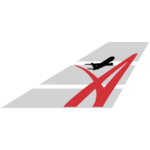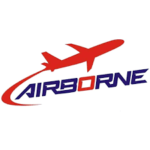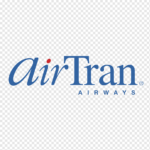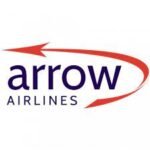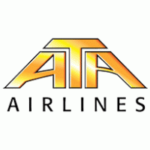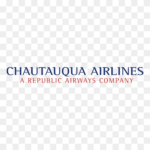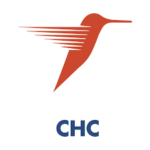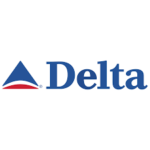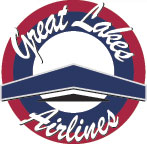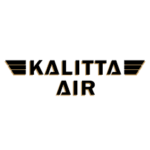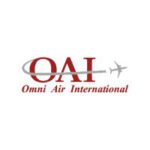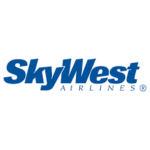North America Pilot Payscales
North America Pilot Pay Scales have a median salary of a First Officer is between $25,000 and $91,000, according to Payscale.
- European Pilot Payscales
North America Pilot Pay Scales
North America Pilot Pay Scales: Climbing from Regional to Major
Over 80% of aspiring pilots, students in North America, are unaware of the diverse pay scales, including average salary per hour, that exist across different airlines and types of aviation, including flights. Navigating through the world of North America pilot pay scales, which may include understanding the average salary per hour, can seem like a daunting task, especially when you’re trying to plot a career path in the skies of the United States. From major airlines to regional carriers, understanding how compensation changes with experience, type ratings, pilot licenses including the private pilot license, and hours logged is crucial for anyone looking to take off into a career in aviation over the course of a year or month. This guide aims to demystify the complexities surrounding pilot salaries per hour, per diem, and per month in the United States, giving you a clear runway towards making informed decisions about your future in the cockpit. Let’s dive into what makes flying across North America with pilot licenses, including the private pilot license, not just a dream job but also a well-paid reality, united by the hour.
Key Takeaways
Understanding the Different Pilot Licences is crucial for aspiring pilots, as each licence type directly impacts potential earnings and career opportunities within the aviation industry.
The average pilot salaries in North America vary widely, with factors such as the airline’s size, the type of aircraft flown, and geographical location playing significant roles in determining pay scales by hour, month, and year.
Seniority significantly influences pilot earnings, with more experienced pilots, especially Captains, earning considerably more than their junior counterparts or First Officers per hour, year, and month.
Choosing between commercial and regional airlines involves weighing the pros and cons in terms of pay, benefits, lifestyle, career progression opportunities, and the impact on private pilot license hour requirements over a year.
For those starting a pilot career, it’s important to have a financial plan in place, considering the initial costs of obtaining pilot licences and the time it may take to secure a well-paying position within a year.
Selecting the right airline is a critical decision that can affect your career satisfaction and financial well-being, especially with a pilot license in your first year. Consider factors such as base location, growth opportunities, company culture, and year alongside the pay scale.
Understanding Pilot Licences
Licence Types
Pilot licences vary greatly. Each serves a unique purpose, catering to different aviation career paths. In North America, the primary types include the private pilot licence (PPL), commercial pilot licence (CPL), and the Airline Transport Pilot (ATP) licence.
The PPL is the most basic form of certification. It allows individuals to fly aircraft non-commercially. This licence is often the first step for those aiming to pursue a career in aviation.
The CPL takes things up a notch. It enables pilots to earn from their flying activities. The training is more rigorous than for the PPL, focusing on advanced flying techniques and safety procedures.
Lastly, the ATP licence represents the pinnacle of pilot certification. It’s mandatory for pilots who wish to command large commercial aircraft. Obtaining this licence requires significant flight experience and mastery of complex aviation knowledge.
Training Requirements
Each type of pilot licence comes with its own set of training requirements and qualifications.
For a PPL, candidates must complete at least 40 hours of flight time. This includes both solo flights and instruction time. They also need to pass a written exam and a practical flight test.
CPL candidates face stricter demands. They must log at least 250 hours of flight time covering various conditions and maneuvers. They undergo a more comprehensive written examination alongside a detailed flight test.
ATP candidates are required to have at least 1,500 hours of flight time. This includes night flying and instrument flying hours. The ATP certification process also involves passing a rigorous theory exam that covers all aspects of commercial aviation operations.
Career Goals
Choosing the right pilot licence is crucial for aligning with one’s career goals in aviation.
Those looking to fly recreationally or with family might find the PPL sufficient for their needs. However, aspiring professional pilots will need to aim for at least a CPL to start earning from flying jobs.
For individuals dreaming of becoming airline captains or piloting large aircraft, attaining an ATP licence is essential. It not only opens doors to major airlines but also signifies the highest standard of piloting skill and knowledge in the industry.
Average Pilot Salaries in North America
Regional Airlines
Pilots at regional airlines often start their careers with lower pay. Entry-level pilots might earn around $50,000 annually. This reflects the initial phase of their career after obtaining a pilot licence.
With experience, these pilots see a salary increase. After several years, they can expect to make upwards of $80,000. The gap between entry-level and experienced pilots highlights the value of experience in this field.
Commercial Airlines
Commercial airline pilots enjoy higher salaries compared to their regional counterparts. An average salary for a new commercial pilot starts at about $80,000. This significant difference is due to the larger aircraft and more passengers.
Experienced commercial pilots in the United States can earn over $150,000 annually. Such figures demonstrate the lucrative potential of pursuing a career with major airlines.
Location Impact
Salaries vary greatly depending on location within North America. Pilots in major US cities often receive higher pay due to the cost of living and operational scales of airlines based there.
For instance, pilots in New York or Los Angeles may have salaries that are 10-20% higher than those in smaller cities or rural areas. This variation underscores the importance of location in determining pilot pay scales.
Airline Size
The size of an airline also plays a crucial role in determining pilot salaries. Larger airlines offer more competitive wages, benefits, and opportunities for advancement.
Pilots at major North American airlines can command impressive salaries and benefits packages, reflecting their extensive responsibilities and expertise required to operate large aircraft safely.
Factors Influencing Pilot Pay Scales
Experience Level
Pilot pay significantly hinges on their experience level. New pilots often start at the lower end of the pay range. As they accrue flight hours and gain expertise, their compensation sees a notable increase. This progression is not just about time; it’s about the value they bring with each flight hour logged.
Pilots with years under their belt command higher wages. Their deep understanding of aviation nuances makes them invaluable. Hence, airlines are willing to offer better pay and incentives to retain such talent.
Aircraft Type
The type of aircraft a pilot flies also plays a crucial role in determining their salary. Pilots operating large, complex airliners usually earn more than those flying smaller planes. This disparity is due to the additional training and certifications required for larger aircraft.
Flying a wide-body jet across continents demands a higher skill level compared to piloting regional flights. Consequently, pilots in command of these larger aircraft see a substantial bump in their earnings.
Union Negotiations
Union negotiations are pivotal in setting pilot pay scales across different airlines. These discussions ensure fair wages and working conditions for pilots. They also address issues like overtime pay and tuition reimbursement, further impacting overall compensation.
Unions work tirelessly to secure competitive salaries for their members. They leverage collective bargaining to align pilot pay with industry standards and living costs.
Market Demand
The current market demand for pilots significantly influences salary trends. With an ongoing global pilot shortage, airlines are revising pay scales upwards to attract qualified candidates. This shortage has turned the tables in favor of pilots, allowing them to negotiate better terms.
In regions experiencing rapid aviation growth, the competition for experienced pilots pushes salaries even higher. Airlines are not just offering attractive base salaries but also bonuses and other incentives to lure top talent.
Commercial vs Regional Airline Pay
Salary Comparison
Commercial pilots typically earn higher wages than those flying for regional carriers. This difference reflects the larger aircraft and more passengers they handle. A commercial pilot’s salary starts at a significantly higher base compared to regional pilots.
Regional airline pay, while lower, often includes override pay. This is extra compensation for hours flown beyond a standard threshold. It helps bridge the gap in earnings between regional and commercial pilots.
Benefits Package
The benefits package for commercial pilots usually outshines what regional airlines offer. They enjoy comprehensive health insurance, retirement plans, and generous leave policies. Their job security is also generally stronger due to the size and financial stability of major airlines.
Regional carriers, recognising the need to attract talent, have improved their benefits packages. These now often include health benefits, life insurance, and sometimes even tuition reimbursement schemes to help with ongoing training costs.
Career Progression
Career progression can be faster at regional airlines due to shorter command upgrade times. Pilots looking to gain experience quickly find this appealing. Moving up to captain at a regional carrier can happen in a few years, providing valuable experience for later transitioning to a commercial airline.
Commercial pilots enjoy long-term career prospects with opportunities to fly international routes and operate wide-body aircraft. Such positions come with significant increases in pay and prestige.
Incentives Offered
To combat the pilot shortage, regional airlines have introduced attractive incentives. Signing bonuses, sometimes reaching tens of thousands of pounds, are common. Tuition reimbursement programs also support new pilots in covering their education expenses.
These incentives make joining a regional carrier more appealing despite the lower base pay. They represent an investment in a pilot’s future career growth within the aviation industry.
Captain and First Officer Salary Differences
Salary Gap
The salary differences between Captains and First Officers within the same airline are significant. Captains often earn nearly double what First Officers do. This gap reflects their greater responsibilities and experience.
A First Officer might start with an annual salary of $50,000. In contrast, a Captain’s pay can begin at $100,000 or more. These figures vary based on the airline, type of aircraft, and flight routes.
Progression Path
The journey from First Officer to Captain is both challenging and rewarding. It requires years of flying experience, continuous training, and passing rigorous evaluations.
First Officers must accumulate thousands of flight hours to qualify for a Captain’s position. They also need to demonstrate exceptional flying skills and leadership qualities. As they progress, their earnings increase incrementally.
Seniority Impact
Seniority plays a crucial role in becoming a Captain. Airlines operate on a seniority-based system for promotions. Thus, senior captains enjoy the highest salaries due to their extensive experience and tenure.
A pilot’s seniority not only determines their eligibility for promotion but also influences their choice of routes and schedules. High seniority brings better pay and preferred flying assignments.
The Role of Seniority in Pilot Earnings
Seniority Impact
Seniority plays a crucial role in shaping a pilot’s career, influencing not just their schedules but also their routes and yearly income. Pilots with more years under their belts often have the privilege to choose preferred flights and destinations. This choice directly affects overtime opportunities, allowing seasoned pilots to boost their earnings significantly.
Pilots at the beginning of their careers typically find themselves on standby, filling in for absent colleagues or covering less desirable routes. These early years, while challenging, are a necessary step towards achieving higher seniority and the perks that come with it.
Financial Benefits
The long-term financial advantages of staying with one airline cannot be overstated. As pilots climb the seniority ladder, they not only enjoy increased base pay but also gain access to better overtime rates and bonuses. This system encourages loyalty among pilots, as jumping ship to another airline means starting from scratch in terms of seniority.
Moreover, income stability improves with seniority. Older pilots have a clearer picture of their annual earnings, making personal financial planning easier. They can anticipate regular raises and schedule more overtime work if needed, knowing their place on the seniority list secures these opportunities.
Promotion Opportunities
Seniority is key to unlocking promotion paths within an airline. Top positions like captain or chief pilot usually go to those with extensive experience and proven dedication to the company. These roles come with substantial salary increases, reflecting the responsibility and expertise required.
Promotion does not solely rely on flying hours; a pilot’s commitment to staying with an airline weighs heavily in these decisions. Those who demonstrate loyalty and accumulate years of service stand a better chance at ascending to higher-paying positions.
Starting a Pilot Career Financial Guide
Training Costs
Training to become a pilot involves significant financial investment. Aspiring pilots must cover the costs of flight school, which can range from £50,000 to over £100,000. This includes obtaining private and commercial licences.
They also need to pay for additional ratings and certifications. Each step is crucial for advancing in this career path.
Financial Strategies
Managing the financial burden of pilot training requires careful planning. Scholarships and sponsorships offer some relief. They can significantly reduce out-of-pocket expenses.
Cadet programmes with airlines are another viable option. These programmes often cover training costs in exchange for a commitment to work with the airline for a certain period post-training.
Long-term Rewards
Despite the high initial costs, a career as a pilot offers substantial long-term financial rewards. Senior pilots enjoy competitive salaries, ranging into six figures. 401k contributions and other benefits add to the overall compensation package, making it a lucrative profession in the long run.
Pilots can also look forward to regular pay increases as they gain experience and seniority within an airline.
Choosing the Right Airline for Your Career
Pay Scales
Pilot pay varies widely among many airlines. Major airlines often offer higher salaries compared to regional carriers. However, starting at a regional airline can provide valuable flight experience that is essential for moving up to larger, better-paying companies. It’s crucial to use a calculator or other tools to compare the hourly wages and annual salary scales.
A pilot’s income is not just about the base pay. Overtime, holiday pay, and bonuses for flying longer routes can significantly increase earnings. Understanding these factors helps in making an informed decision.
Base Locations
The choice of base location impacts life and work balance significantly. Some bases might offer a more healthy lifestyle or be closer to family and friends. Pilots should consider where they’re willing to live or commute to when choosing an airline.
Major airlines have multiple base locations, offering flexibility and variety in lifestyle choices. Regional airlines may have fewer bases but can provide quicker access to home for pilots valuing proximity over broader career options.
Career Progression
Career progression opportunities vary across airlines. Pilots must assess how fast they can advance from first officer to captain and what types of aircraft they will have the chance to fly.
Major airlines typically promise faster progression due to their size and number of available positions. They also offer opportunities to fly international routes, which is appealing for those seeking extensive flying experience and trips abroad.
Airline Reputation
Researching an airline’s reputation is vital. Factors such as treatment of staff, stability of the company, growth opportunities, and pilot satisfaction play a significant role in long-term career happiness.
Pilots should talk to current employees, read online forums, and consult with unions when possible. This research provides insights into the daily realities of working for different airlines.
Regional vs Commercial
Choosing between regional and commercial airlines is a key decision for new pilots. Regional airlines offer quicker entry into the cockpit but often at lower pay rates and with less glamorous routes.
Commercial airlines demand more experience but provide higher pay, better benefits, and more varied flight experiences. Pilots must weigh these options against their personal goals, financial needs, and desired lifestyle.
FAQs on Becoming a Career Pilot
Time Commitment
It takes significant time to become a pilot. New pilots often wonder about the duration from starting training to flying commercially. It generally spans 1 to 5 years, depending on the training path chosen.
Flight school can be intense, with many pilots dedicating upwards of two years to obtain their commercial pilot license. This includes ground school, exams, and flight hours.
Financial Investment
The cost of becoming a pilot is substantial. Training expenses for new pilots range widely but can exceed $70,000. Scholarships and financial aid options exist, yet many pilots still face hefty loans.
Initial investments cover lessons, equipment, and certification fees. The return on investment comes with higher salary potentials in the long run.
Lifestyle and Satisfaction
Many pilots find their career rewarding despite the challenges. They report high job satisfaction due to unique work environments and dynamic duties.
However, the lifestyle demands flexibility. Pilots often spend days away from home and must adapt to irregular schedules.
Future Outlook
The future for pilots in North America looks promising post-COVID-19. The industry is recovering, with an expected surge in air travel demand.
Airlines are hiring again, aiming to fill the gap left by many pilots who took early retirement during the pandemic. This creates ample opportunities for aspiring aviators.
Final Remarks
Embarking on a pilot career in North America offers a promising financial pathway, influenced by various factors such as licence type, airline choice, and seniority level. Your journey from understanding pilot licences to choosing the right airline underscores the complexity and rewards of this profession. Salaries vary significantly, reflecting the responsibilities held by Captains and First Officers, as well as the differences between commercial and regional airlines. Seniority plays a crucial role in your earnings, highlighting the importance of long-term planning and strategic career moves.
Navigating these waters requires clear-eyed assessment and savvy decision-making. Armed with insights from this guide, you’re better positioned to make informed choices that align with your career ambitions and financial goals. Ready to take off? Dive deeper into the aviation industry’s opportunities and chart a course that promises not just thrilling skies but rewarding paychecks too.
Frequently Asked Questions
How long does it take to become a pilot in North America, specifically in the United States, where many airlines require minimum hours of flights?
It typically takes 2-3 years to become a commercial pilot, depending on the training route and individual progress.
What is the starting salary for a new pilot with many airlines on flights in the United States, North America?
New pilots can expect a starting salary of around $30,000-$50,000, varying by airline and region.
Do captains earn significantly more than first officers?
Yes, captains often earn twice as much or more than first officers, reflecting their experience and responsibility.
How do regional airlines’ pay compare to major airlines?
Regional airline pay is generally lower, with major airlines offering significantly higher salaries and benefits.
Does seniority affect pilots’ salaries?
Absolutely. Seniority plays a crucial role in determining pilots’ pay scales, schedules, and route assignments.
What factors influence pilot pay scales the most?
Experience, type of aircraft flown, and airline size are key factors affecting pilot pay scales.
Can choosing the right airline, for reasons such as flights availability, may impact my career growth as a pilot and benefit students?
Definitely. Selecting an airline that aligns with your career goals can significantly impact your progression and earnings.
